Aircraft type B-25 Mitchell Date 28 July 1945 Crew count 3 | Registration 41-30577 Site Empire State Building | |
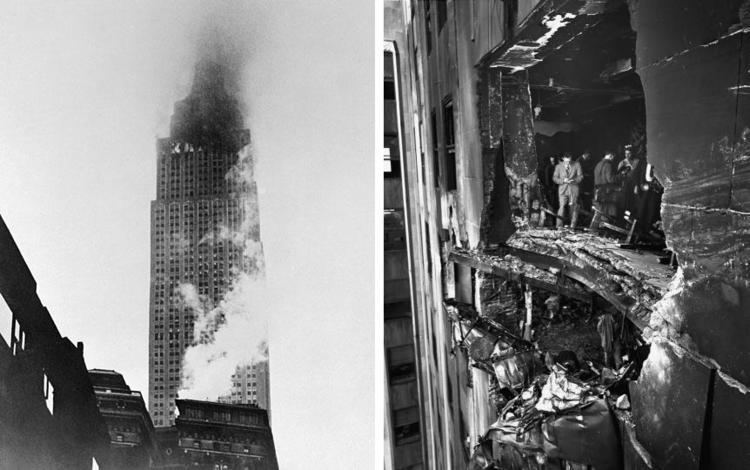 | ||
Summary Controlled flight into terrain (building) Aircraft name Old John Feather Merchant Destination Newark Liberty International Airport Operator United States Army Air Forces Total fatalities 14 (11 in building and 3 crew) Flight origins Hanscom Air Force Base, Bedford Similar 2006 New York City plane cra, 2012 Empire State Buil, 1997 Empire State Buil, 2002 Pirelli Tower airplane c, 2010 Austin suicide at | ||
B 25 empire state building crash news footage
The B-25 Empire State Building crash was a 1945 aircraft accident in which a B-25 Mitchell bomber, piloted in thick fog over New York City, crashed into the Empire State Building. The accident did not compromise the building's structural integrity, but it did cause fourteen deaths (three crewmen and eleven people in the building) and damage estimated at $1,000,000 ($13,303,142 in 2016 dollars).
Contents
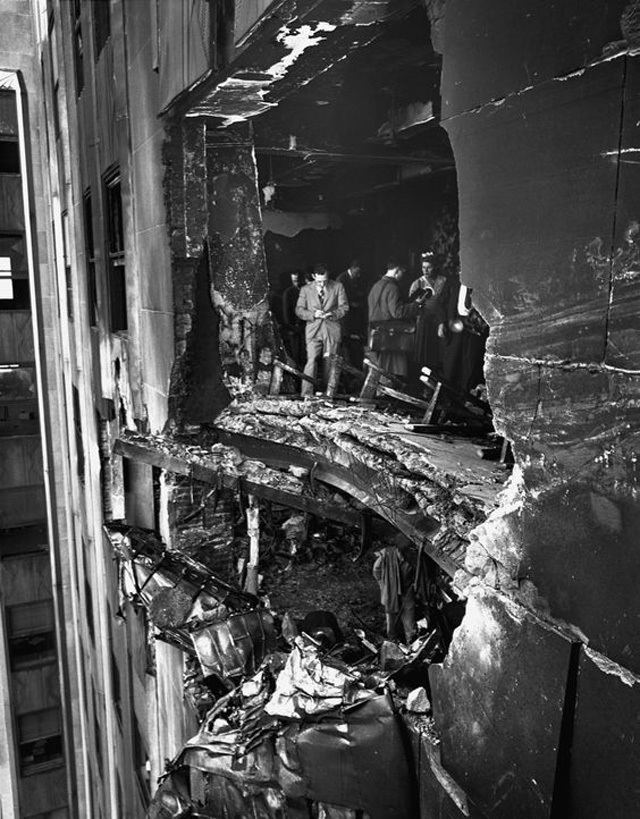
Details
On Saturday, July 28, 1945, William Franklin Smith, Jr., was piloting a B-25 Mitchell bomber on a routine personnel transport mission from Bedford Army Air Field to Newark Airport. Smith asked for clearance to land, but was advised of zero visibility. Proceeding anyway, he became disoriented by the fog, and started turning right instead of left after passing the Chrysler Building.
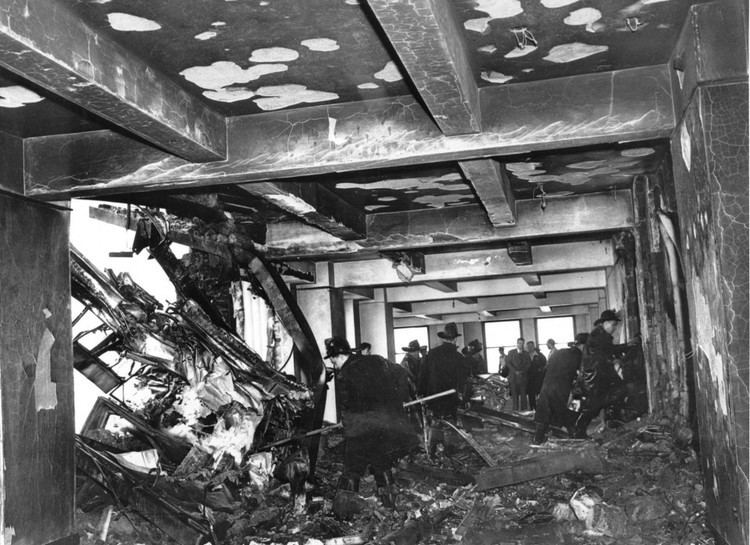
At 9:40 a.m., the aircraft crashed into the north side of the Empire State Building, between the 78th and 80th floors, carving an 18-by-20-foot (5.5 m × 6.1 m) hole in the building where the offices of the National Catholic Welfare Council were located. One engine shot through the South side opposite the impact and flew as far as the next block, dropping 900 feet (270 m) and landing on the roof of a nearby building and starting a fire that destroyed a penthouse art studio. The other engine and part of the landing gear plummeted down an elevator shaft. The resulting fire was extinguished in 40 minutes. It is still the only fire at such a height to be brought under control.
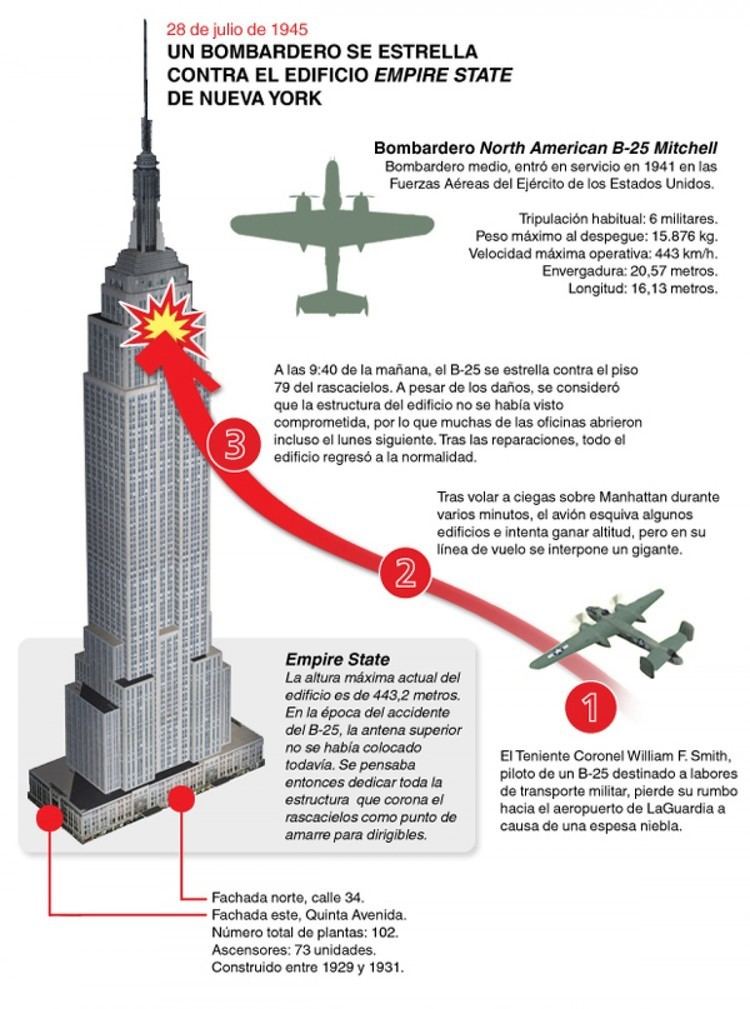
Fourteen people were killed: Smith, the two others aboard the bomber (Staff Sergeant Christopher Domitrovich and Albert Perna, a Navy aviation machinist's friend hitching a ride), and eleven others in the building. Smith was not found until two days later, when search crews discovered that his body had gone through an elevator shaft and fallen to the bottom. Elevator operator Betty Lou Oliver was injured. Rescuers decided to transport her on an elevator that they did not know had weakened cables. The cables snapped and the elevator fell 75 stories, ending up in the basements. Oliver managed to survive the fall and rescuers later found her amongst the rubble. It still stands as the Guinness World Record for the longest survived elevator fall.
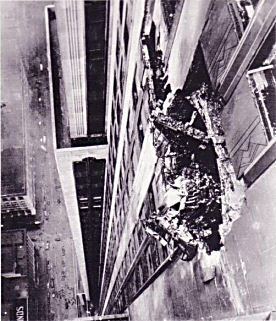
Despite the damage and loss of life, the building was open for business on many floors on the following Monday. The crash spurred the passage of the long-pending Federal Tort Claims Act of 1946, as well as the insertion of retroactive provisions into the law, allowing people to sue the government for the accident.
A missing stone in the facade served as evidence of where the aircraft crashed into the building.
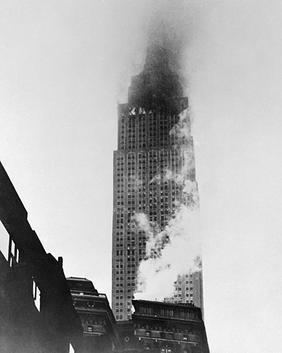
In the 1960s, when the World Trade Center was being designed, this B-25 impact incident served as motivation for the designers to consider a scenario of an accidental impact of a Boeing 707 into one of the twin towers. The towers were destroyed when two Boeing 767s were intentionally flown into them during the September 11 attacks of 2001.
